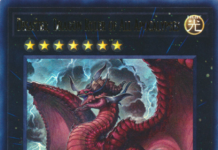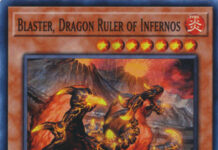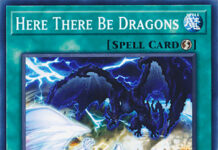My custom Jumpstart project has been very much a stop-start affair since 2020. Part of this was the soul-crushing ennui of the pandemic years, when it felt like Fimbulwinter had come to a country that almost never sees snow at sea level. Part of it was the difficulty of designing an environment with the right level of complexity for me – I have perhaps more capacity than ever to learn rules and interactions, but certainly have less desire than ever to actually navigate them, so as the average text box becomes increasingly wordy and the average rules interaction becomes increasingly unintuitive, new decks feel more like a burden than a game. And part of it was the lack of an overarching concept or unifying theme: cubes often work better when they have such a thing, because when they don’t, you are very much aware that you’re maximizing game concepts like power or synergy, picking cards based on numbers or similar criteria.
But Lord of the Rings: Tales of Middle-earth gave my Jumpstart cube a burst of life. I dug out my packs for the first time in weeks, to add Eagles of the North to the white all-animals pack, replace surprisingly long-winded aggro creatures with East-Mark Cavalier and Shire Shirriff, and try to work an Amass Orcs subtheme into the black and red packs. After a surprisingly underwhelming multiplanar war and the anticlimactic end to the Phyrexia storyline, Tales of Middle-earth made me feel something I haven’t for some time: eagerness to play Magic.
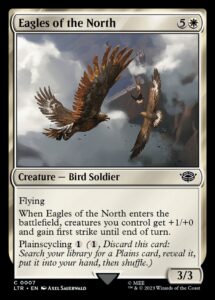
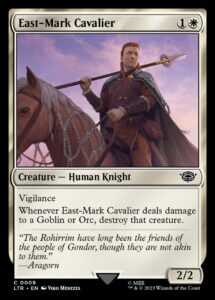
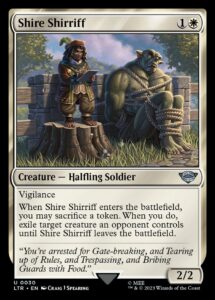
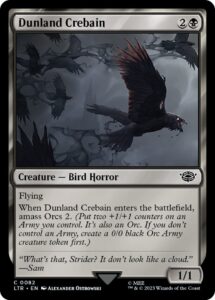
I’m clearly not the only one. Tales of Middle-earth came out about three months ago and is already the second-best-selling set of all time. This should come as a surprise to absolutely no-one. The Lord of the Rings is a novel with extraordinary longevity and solid appeal across generations. It continues to move people whose parents were not yet born when it was written. Including me: before I had my own editions, I read the early parts of the story from a copy that was even more physically damaged than the one you might have seen me posting, a copy my mother had in her possession. A copy that her father gave her, years after he bought it new.
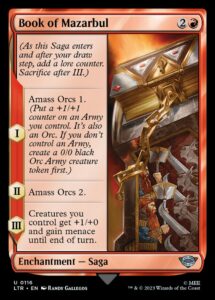
If you delve deep enough into Tolkien’s notes and background material, such as his letters and the writings that his son eventually published as the History of Middle-earth series, you will learn something very interesting about his motivations. For those who haven’t heard it before, I’ll share it now: he set out to write a novel and ended up on a quest to make a new mythology, as he saw it, for England (and perhaps for the English-speaking world in general). He and his close friend C.S. Lewis were inspired by what were then cutting-edge advances in theoretical physics, especially the theory of relativity and its implications for space travel and time travel. They decided that each of them would write a story about one of the concepts; Lewis got space travel and the result was (unsurprisingly) his Space Trilogy. Tolkien got time travel, and started a novel called The Lost Road. He never completed this novel, but some elements of it survived all the way through to The Lord of the Rings – it involves an English university professor who dreams of the lost Atlantis and its destruction by a tsunami (inspired, you won’t be surprised to hear, by Tolkien himself and one of his own recurring dreams). During this process, he inadvertantly drifted into a seemingly unrelated area of his interests.
Tolkien was apparently troubled by the fact that Beowulf occupied such a central place in English mythic thought, because the story is so strongly connected to Denmark. He realized that the content he’d been working on could be expanded into a legendarium that ostensibly underlay the ancient world of Europe, especially England. Or at least, it could after he added references and borrowed elements from Norse, Germanic, and Celtic mythology. There are echoes of the Eddas in the names of the dwarves and wizards, in the apocalyptic battles of Valar and elves and demons, and in the forests haunted by necromancers and skin-shifters. There is the spirit of Charlemagne’s collapsing empire in Gondor’s pride and regrets and memories of glory; and there is the image of the Rhinegold in, of course, the Great Ring itself, not to mention the dragon Smaug who sleeps on a treasure hoard near a lake. There is the memory of Avalon in the glades of Rivendell and Lothlorien, and in the Grey Havens; and the reincarnated soul of Excalibur appears as Anduril, wielded by the returning king.
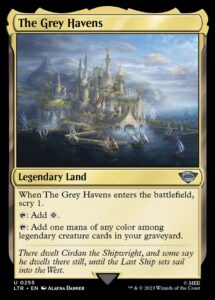
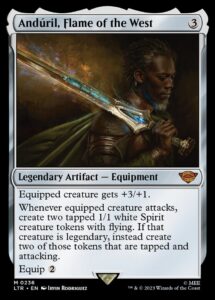
There are echoes of the most enduring foundational stories, everything that formed the English-speaking world, on every page of Lord of the Rings. And these, combined with Tolkien’s use of Christian themes and his storytelling device relating to “finding and translating” ancient texts, forge a deep and lasting connection between the story and the readers. On the stairs of Cirith Ungol, Sam realizes that the Phial of Galadriel contains the same light that the Noldor battled Morgoth to save, the same light that Earendil carries in the sky; and this revelation prompts him to exclaim “We’re in the same tale still! It’s going on”. He could have been talking about Lord of the Rings itself, because there are few other novels that so effectively make the reader feel like the story is part of them. In a sense, as we’ve explained, it is; and it was part of us long before Lord of the Rings was written.
Thus, Tales of Middle-earth makes for a confronting contrast with the in-house stories and characters. No matter what form you use to render Frodo and Sam, Gandalf and Saruman, Aragorn and Arwen, Sauron and Tom Bombadil, Legolas and Gimli, that connection remains. And when a product like Magic draws attention to that connection, it also draws attention to the fact that most of Magic’s lore has no such connection – it’s just there to provide a visually appealing hook to help encourage us to buy more cards and play in more tournaments. It might surprise you to hear me say this, because I’ve also said that Throne of Eldraine was the best thing Magic had ever done at the time, and that Kaldheim might help reawaken the viking spirit in us all, and that the Brothers’ War (the story and the set) made us all feel things. But if you’ve been paying attention, you’ll already know why I said that then and why I’m saying what I am now – perhaps I myself wasn’t fully aware of it until it came time to type out this article about Tolkien, but there is no way to be unaware of it now.
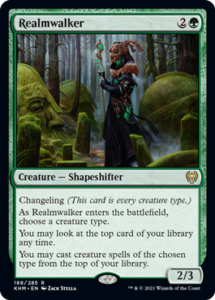
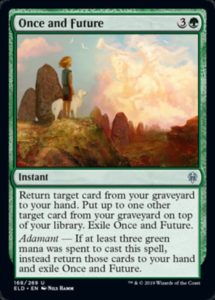
Throne of Eldraine and Kaldheim have the same source material as Lord of the Rings. They use it in a parallel way, in the sense of creating a different world with echoes of history and folklore, so it is not surprising when they evoke a similar reaction, albeit perhaps not as strong a reaction. So many people who followed Tolkien copied different parts of his legendarium from the ones he thought were the most important, to the point that the entire fantasy genre is underpinned by a debate about how much writers should focus on magic and monsters versus people and relationships. In a curious parallel, we mostly missed the actual lesson of Eldraine and Kaldheim’s significance, because in terms of flavor they are proto-Universes Beyond sets, and we could thus have predicted that the emotional impact of future full Universes Beyond sets would probably outweigh Magic’s in-house lore. The Brothers’ War is not directly lifted from ancient cultural touchstones, but some of them have left a mark on it via filtered influences and references – brothers and other family members have been going to war since Marduk’s battle against Tiamat, and the Titanomachy in Greece. The story is also strongly inspired by World War I, the industrial age’s manifestation of currents in society which have been alternately celebrated and criticized since people first told stories, perhaps most famously in Homer’s Iliad.
Again, there is no way to be unaware of these issues now. And Magic, as perhaps befits a game that changes every year, is again at a crossroads. The average weakness of Magic’s lore, and the greater appeal of Universes Beyond, doesn’t necessarily mean that Magic should, say, stop doing its own in-house lore. But maybe Wizards of the Coast could try and actually learn the right lessons from Lord of the Rings for a change, including taking note of how Tolkien built his legendarium on enduring concepts. For example, the next time they do a Kaldheim set, they could include big violent battles between berserkers and trolls, but also things that make us pause and think about whether all of Alrund’s knowledge brought him happiness, or about the way striving for wealth or glory comes up against abstract forces of society. The next time they do a Theros set, they could include innovative full-color art of hydras and minotaurs with blood on their claws, but also things that draw attention to the interaction of fate and freedom and the ways in which each one might create the other. When they do a cowboy set, as they’ve promised to in the upcoming release cycles, they could perhaps not just stop at drawing Oko in a cowboy hat and include something that lets us reflect on individualism and responsibility, and the tension between the pull of the past and the pull of the future. Mark Rosewater is on the record as saying that he wants Magic to be the sort of property that lasts for a century and longer. It makes sense to take cues from a property that has already (close to) done that.
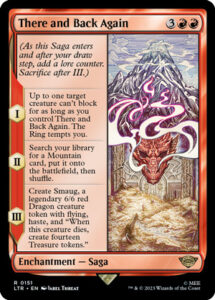
“I wonder what sort of a tale we’ve fallen into?”
— Sam Gamgee
From The Two Towers

